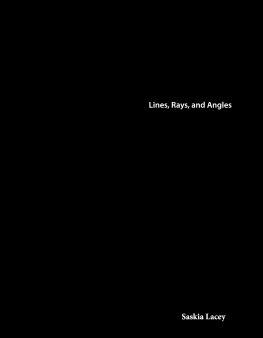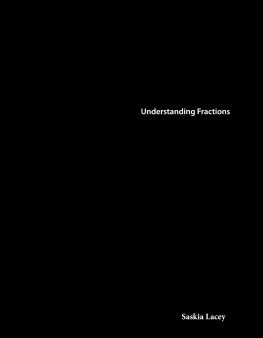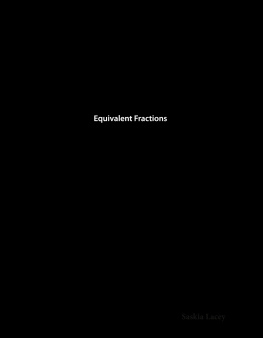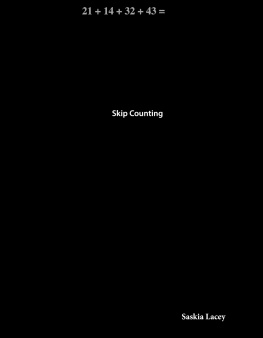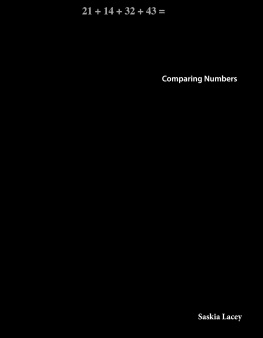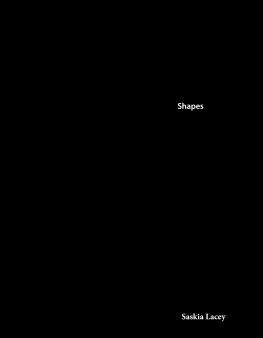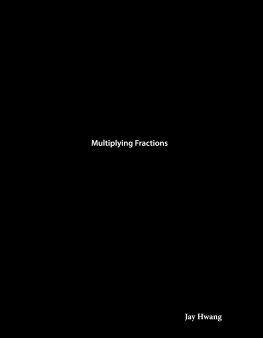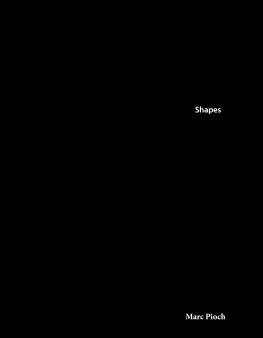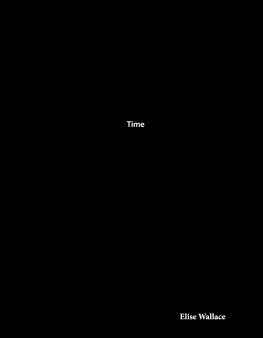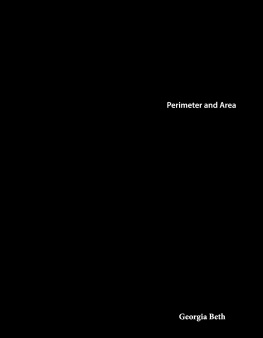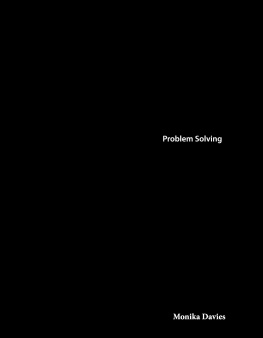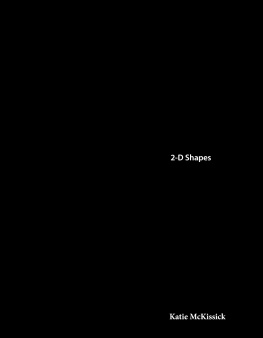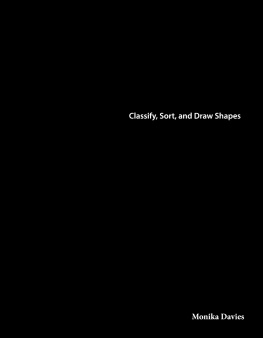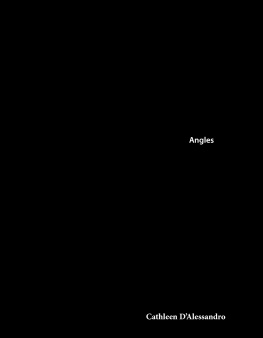Saskia Lacey - Art and Culture: Abstract Art: Lines, Rays, and Angles
Here you can read online Saskia Lacey - Art and Culture: Abstract Art: Lines, Rays, and Angles full text of the book (entire story) in english for free. Download pdf and epub, get meaning, cover and reviews about this ebook. year: 2018, publisher: Teacher Created Materials, genre: Art. Description of the work, (preface) as well as reviews are available. Best literature library LitArk.com created for fans of good reading and offers a wide selection of genres:
Romance novel
Science fiction
Adventure
Detective
Science
History
Home and family
Prose
Art
Politics
Computer
Non-fiction
Religion
Business
Children
Humor
Choose a favorite category and find really read worthwhile books. Enjoy immersion in the world of imagination, feel the emotions of the characters or learn something new for yourself, make an fascinating discovery.
- Book:Art and Culture: Abstract Art: Lines, Rays, and Angles
- Author:
- Publisher:Teacher Created Materials
- Genre:
- Year:2018
- Rating:4 / 5
- Favourites:Add to favourites
- Your mark:
- 80
- 1
- 2
- 3
- 4
- 5
Art and Culture: Abstract Art: Lines, Rays, and Angles: summary, description and annotation
We offer to read an annotation, description, summary or preface (depends on what the author of the book "Art and Culture: Abstract Art: Lines, Rays, and Angles" wrote himself). If you haven't found the necessary information about the book — write in the comments, we will try to find it.
Art and Culture: Abstract Art: Lines, Rays, and Angles — read online for free the complete book (whole text) full work
Below is the text of the book, divided by pages. System saving the place of the last page read, allows you to conveniently read the book "Art and Culture: Abstract Art: Lines, Rays, and Angles" online for free, without having to search again every time where you left off. Put a bookmark, and you can go to the page where you finished reading at any time.
Font size:
Interval:
Bookmark:
0covercover.xhtmlArt and culture AbstractArt Lines, Rays, and Angles Saskia Laceycover1page0001page0001.xhtml22page0002page0002.xhtml33page0003page0003.xhtml44page0004page0004.xhtmlTable of Contents Understanding Abstract Art 4 The Magic of Perspective 6 Abstract Artists and Geometry 10 Beyond Geometric Abstraction 23 The Next Generation 26 Problem Solving 28 Glossary 30 Index 31 Answer Key 3255page0005page0005.xhtmlUnderstanding Abstract Art Many artists try to recreate what they see in the real world. They sketch landscapes or draw portraits of friends. They paint familiar objects. But, there are other artists who do not try to reflect the outside world. Their drawings, paintings, and sculptures serve a different purpose. These creators are known as abstract artists. Wassily Kandinsky painted Improvisation : Dreamy in 1913.66page0006page0006.xhtmlMany people are confused by abstract art. They are not sure of its purpose. They puzzle over what it is trying to say. To understand what abstract art is, we need to know what it is not. Abstract art does not include mountains, trees, or animals. It doesnt include people or things created by people. It doesnt include objects that we can see or touch. So, whats left? Abstract art features shapes, lines, and colors that do not resemble the real world. Instead, these works of art seek to create a feeling, mood, or idea. Artists like Wassily Kandinsky, Josef Albers, and Sophie Taeuber-Arp (TOY-ber-arp) were pioneers of abstract art. Their work changed the art world forever. Sophie Taeuber-Arp painted Rising, Falling, Flying in 1934.77page0007page0007.xhtmlThe Magic of Perspective To truly grasp abstract art, we must explore how art has evolved. Before the era of the abstract, painters wanted to create realistic art. They tried to make their works as true to life as they could. If youve ever tried painting, you might think this is a challenge. You start painting with high hopes. But then, you become frustrated. It doesnt look the way you thought it would. Many artists use the rules of perspective to help them overcome this challenge. Perspective helps artists create works that appear three-dimensional. Before artists learned the rules of perspective, their paintings looked two-dimensional, or flat. A work like Court of Kings Bench is an example of a painting that does not use perspective. There is no element of depth. So, the people in the drawing look the same size. Court of Kings Bench does not use perspective.88page0008page0008.xhtmlAs centuries passed, paintings became more and more lifelike. Some paintings almost seemed like photographs. These works took a long time to create. Artists put thought into every brushstroke. Raphael Sanzio used perspective in his paintings to make them look realistic. The people in the foreground look closer than the people in the background. Visitors admire the perspective in this Raphael Sanzio painting.99page0009page0009.xhtmlImpressionism There was a great shift in the nineteenth century. A new group of painters arrived. They had a unique vision. They were called impressionists. Unlike earlier artists, they were not concerned with art that looked exactly like the real world. They were more interested in capturing the light and color of the moment. They painted quickly and often outdoors. Take, for instance, Claude Monets Water Lilies. The painting shows real objects water lilies. But, it is not a perfect representation. The painting could never be mistaken for a photograph. It is too abstract. The impressionists took the first step toward abstract art. Water Lilies by Claude Monet1010page0010page0010.xhtmlCubism After the impressionists, artists such as Pablo Picasso and Georges Braque (jawrj brahk) arrived. Their works were even more abstract. They were known as cubists. Cubists use geometric shapes to create their masterpieces. A great example of cubism is Picassos Three Musicians. At first, the shapes stand out. There are squares and triangles. There are lines and circles. But, take a longer look. The shapes form three distinct figures. Picasso, like other cubists, painted objects from the real world. Three Musicians may seem strange. But, it is not purely abstract. Three Musicians by Pablo Picasso1111page0011page0011.xhtmlAbstract Artists and Geometry Abstract art continued to grow in popularity. The first abstract works were geometrical. They were collections of expressive colors and shapes. Artists such as Kandinsky, Klint, Albers, Bauer, and Taeuber-Arp helped mold abstract art. Their works may seem simple. But, they often hide deeper meaning. Wassily Kandinsky Wassily Kandinsky is thought by many to be the first abstract artist. He was born in Moscow, Russia, in 1866. He came from a wealthy family. During his childhood, the painter traveled with his parents all over Europe. Kandinsky painted in his youth. But, he moved away from art as an adult. He was worried about living an artists life. He wasnt sure whether he would be successful. So, despite his love for painting, he completed a degree in law. But at the age of 30, Kandinsky had a change of heart. He decided to take a leap of faith. He would give up his career for the life of an artist. Wassily Kandinsky1212page0012page0012.xhtmlBlack Spot by Wassily Kandinsky Let's Explore Math Kandinskys abstract works often include points, lines, rays, and line segments. Find examples of points, lines, rays, and line segments in the Kandinsky painting above.1313page0013page0013.xhtmlKandinsky looked up to the impressionists. He respected the cubists. He was a great lover of art and art history. But, he also longed to do something different. He wanted to make art without a subject. He wanted his colors, lines, and shapes to speak for themselves. In this way, colors and shapes would become his language. They would express his feelings and emotions. Composition VIII by Wassily Kandinsky1414page0014page0014.xhtmlEvery color had a different effect for Kandinsky. Each held a unique message. He even believed that colors had distinct sounds. He thought of yellow as a trumpet. The color blue was a pipe organ. This influence of music is clearly seen in Kandinskys works. His Composition VIII seems to contain a symphony. Each of its brushstrokes sings like a note of music. Kandinsky taught design and painting classes at an art school in Germany. Teaching helped him develop new ideas for future artwork. He also wrote two books during this time. His books explained the use of geometric shapes in his art. They are still popular today. Let's Explore Math Kandinsky often included triangles in his paintings. The triangles have acute, obtuse, and right angles. The triangles can also be classified as equilateral, isosceles, or scalene based on the lengths of their sides. 1. Look at the triangles in Kandinskys painting. Determine whether each angle is acute, obtuse, or right. 2. How do you know whether a triangle is equilateral, isosceles, or scalene? Triangles in a Curve by Wassily Kandinsky1515page0015page0015.xhtmlHilma af Klint Hilma af Klint is a lesser-known abstract artist. But, she is no less influential to the art movement. Her first works date before those of her more famous peers. Some scholars believe she, not Kandinsky, was the first true abstract artist! Klint was born in Stockholm, Sweden. As a young woman, she attended art school. At the time, Klint was well known for landscapes and portraits. She kept her abstract art private. She didnt think that people would understand her work. A gallery visitor views Klints Group IV, The Ten Largest collection from 1907.1616page0016page0016.xhtmlOver the course of Klints life, she created hundreds of abstract wonders. She painted quickly, often creating several paintings a week. In her work, Klint reached for something beyond the physical world. She sought to connect with the spiritual realm. And, although Klint was small in stature, she created gigantic paintings. Some of them are over 10 feet (3 meters) tall! Before Klint died, she made a decision. It would affect her legacy, or lack thereof, for many years. In her will, she ordered that her work not be made public for at least 20 years after her death. Her wish was granted. Her paintings werent publicly shown until 1986 42 years after her death! Hilma af Klint1717page0017page0017.xhtmlJosef Albers The art of Josef Albers can be found in museums around the world. Albers was a German innovator. He invented new forms of art. One art movement was called op art. It focused on optical illusions. Thats when the eye is tricked into seeing something that isnt there. Study for Homage to the Square by Josef Albers Josef Albers1818page0018page0018.xhtmlLike Kandinsky, Albers was a teacher. Albers taught at a school called Bauhaus for 10 years. His time as a teacher helped spark some of his brightest ideas. Albers once wrote, A color has many faces, and one color can be made to appear as two different colors. Colors are very important in abstract art. Albers used color exercises to teach his students. They helped students study how colors interact. One of Alberss great talents was creating illusions with color. He studied the way colors change. Homage to the Square is his most famous series. It studies how colors interact with one another. Each painting features a group of overlapping squares. A museum visitor views Alberss Homage to the Square series. Let's Explore Math The image below is a color exercise by Josef Albers. It includes parallel lines and perpendicular lines. 1. Look at the three yellow bars. Are these bars parallel or perpendicular to each other? Explain your reasoning. 2. Look at the green, purple, and red bars. Are these bars parallel or perpendicular to the yellow bars? Explain your reasoning.1919page0019page0019.xhtmlRudolf Bauer Like most painters, Rudolf Bauer experimented with many styles of art. But in abstract art, he found his home. Like Kandinsky, Bauers art was inspired by music. His paintings are like joyful songs. Bauer even gave many of his pieces musical titles. Furioso 9 by Rudolf Bauer2020page0020page0020.xhtmlBauer dedicated his life to art. In the 1930s, he opened a museum in Germany. The museum featured his paintings, as well as those of Kandinsky. A racist political group called the Nazis did not approve of the museum. They shut it down and sold his paintings. The ones they didnt sell, they destroyed. Soon after, the Nazis sent Bauer to prison. Despite being in jail, he continued to work. After several months, he was released. Unfortunately, we will never see the great pieces that were destroyed. Bauers art has been described as more sculptural than Kandinskys. This means that his art appears more three-dimensional. But in many ways, he and Kandinsky were alike. They both felt that colors could be used to express feelings and ideas. Let's Explore Math This painting by Rudolf Bauer includes two triangles. Compare the properties of the triangles. How are they similar? How are they different? Rounds and Triangles by Rudolf Bauer2121page0021page0021.xhtmlSophie Taeuber-Arp Sophie Taeuber-Arp was an important voice of early abstract art. She was born in 1889 in Switzerland. Switzerland was a country that valued free expression. For this reason, artists gathered there to pursue their craft. Taeuber-Arp quickly became part of a wild art movement. It was called Dada. Dada Head by Sophie Taeuber-Arp Sophie Taeuber-Arp poses behind Dada Head.2222page0022page0022.xhtmlThe Dada movement was a reaction to World War I. Many artists were shocked by the violence. So instead, Dadaists (dah-dah-ists) embraced silliness. They believed that art should be playful. They thought most artists were too serious. Dadaists created many kinds of art. Most of them were very strange. They made toilet sculptures. They painted a mustache on the Mona Lisa. Nothing was off-limits! Taeuber-Arp was an original even among a wild bunch of artists. She was more than a painter. She was a sculptor, dancer, and puppet maker. Her works speak of freedom and joy. Each piece was created by chance and the mood of the moment. Let's Explore Math This painting by Sophie Taeuber-Arp has many shapes. Compare the properties of Quadrilateral A and Quadrilateral B. How are they similar? How are they different? Quadrilateral A Quadrilateral B Four Spaces with a Broken Cross by Sophie Taeuber-Arp2323page0023page0023.xhtmlBlue Poles by Jackson Pollock Jackson Pollock works in his studio in 1949.2424page0024page0024.xhtmlBeyond Geometric Abstraction The first abstract artists worked primarily with geometric shapes. But, as time passed, artists kept exploring. They wanted to try new techniques. They wanted to create other kinds of abstract art. These artists left behind lines and rays. They focused on more fluid art pieces. Jackson Pollock One cannot talk about abstract art without mentioning Jackson Pollock. Pollock was an American. He was born in Wyoming in 1912. As a young adult, he moved to New York. There, he began his life in art. Upon graduating from art school, Pollock struggled with money. It was the era of the Great Depression. Jobs were scarce. But eventually, Pollock found work and advanced as an artist. Pollock was not a gentle painter. He did not create his works carefully. Instead, he poured paint right onto his canvas. He threw and splattered paint, often with his canvas on the ground. Over time, this technique became known as action painting. Pollock inspired the next generation of abstract artists.2525page0025page0025.xhtmlHelen Frankenthaler Born in 1928, Helen Frankenthaler grew up in New York and was raised in a wealthy family. She began painting at a young age. As an abstract artist, she used Pollocks painting techniques. Setting the canvas on the ground, she poured paint from above. Although Pollock influenced Frankenthaler, his style was quite different. Pollock covered his paintings in layers of paint. He stacked colors on top of colors. Frankenthaler tried something new. She stained her canvases. In her pieces, paint and canvas became one. Helen Frankenthaler with her paintings2626page0026page0026.xhtmlFrankenthaler painted her first canvas using this style in 1952. She created the stains by thinning oil paints. Then, she let the canvas soak up the paint. She named her piece Mountains and Sea. Many people did not understand the painting. They thought it looked unfinished. They thought more work needed to be done. But, her artwork became important. Many artists were influenced by her distinct style. She contributed greatly to the world of abstract art. Mountains and Sea by Helen Frankenthaler2727page0027page0027.xhtmlThe Next Generation Abstract art does not represent objects from our world. But, it does represent our feelings and ideas. Today, people around the world are creating meaningful abstract art, even young people like you! Aelita Andre is one such artist. She started painting as a toddler. Some people have called her a child prodigy. Over the course of her career, she has created many pieces. Her paintings are filled with vibrant colors. Andres art has been compared to the works of Pollock. Like Pollock, she paints wildly. Andre often uses her hands to smear the paint. She also drizzles paint onto the canvas from above. She builds her art color by color. Each painting is a unique masterpiece. When asked about her artwork she said, When I do my paintings, I feel free. I dont feel locked up in a tiny world. I just feel free and amazing. She is an inspiration to young artists everywhere! Aelita Andre2828page0028page0028.xhtmlAelita Andre created this collection of artwork at the age of three. Aelita Andre artwork from a 2014 exhibit at a New York City gallery.2929page0029page0029.xhtmlProblem Solving Have you ever wanted to create your own abstract masterpiece? Well, heres your chance! Its your turn to create your own abstract art. Be sure to include everything on the checklist. (Remember, you can always add more than what is on the list.) Then, answer the questions about your work of art. 1. What is the title of your artwork? What inspired you to choose this title? 2. Choose two shapes from your artwork. Compare the properties of the shapes. How are they similar? How are they different?3030page0030page0030.xhtmlAbstract Artwork Checklist 3 points 2 obtuse angles 2 acute angles 2 right angles 2 line segments 2 squares 1 triangle 1 pair of perpendicular lines 1 pair of parallel lines 1 ray 3131page0031page0031.xhtmlGlossary abstract art a style of art that uses colors and lines to create a drawing that does not look realistic acute less than 90 degrees equilateral describes a triangle with three equal sides and three equal angles evolved changed or developed slowly isosceles describes a triangle with two equal sides and two equal angles line segments parts of a line between two end points lines straight paths of points that continue without end in both directions obtuse greater than 90 degrees but less than 180 degrees parallel extending in the same direction and the same distance apart, but not touching at any point perpendicular intersecting to form a 90-degree angle perspective a way of showing depth or distance in a painting or drawing points particular positions, locations, or places prodigy a young person with extraordinary talent rays parts of a line that have one end point and continue on without end in one direction right measuring exactly 90 scalene describes a triangle with no equal sides or angles3232page0032page0032.xhtmlIndex acute angles, Albers, Josef, Andre, Aelita, Bauer, Rudolf, Bauhaus, Braque, Georges, cubism, Dada, Frankenthaler, Helen, impressionism, Kandinsky, Wassily, Klint, Hilma af, lines, Monet, Claude, obtuse angles, op art, parallel lines, perpendicular lines, Picasso, Pablo, points, Pollock, Jackson, rays, right angle, Sanzio, Raphael, square, Taeuber-Arp, Sophie, triangle,3333page0033page0033.xhtmlAnswer Key Lets Explore Math page 11 : Answers will vary, but should include examples of points, lines, rays, and line segments within the artwork. page 13 : 1. Answers will vary, but should describe angles that are less than 90 as acute, angles that are greater than 90 as obtuse, and angles that are equal to 90 as right. 2. Equilateral triangles have 3 equal sides and 3 equal angles. Isosceles triangles have 2 equal sides and 2 equal angles. Scalene triangles have no equal sides or angles. page 17 : 1. Parallel; Parallel lines are two lines that are the same distance apart and do not touch at any point. 2. Perpendicular; Perpendicular lines intersect to form a right angle (90). page 19 : Similar The yellow and black triangles both have 3 sides, 3 angles, and 2 acute angles. Different The yellow triangle has 3 acute angles and the black triangle has an obtuse angle. page 21 : Similar Quadrilaterals A and B both have 4 sides, 4 angles, opposite sides equal in length, and opposite angles equal. Different Quadrilateral A has 4 right angles and Quadrilateral B has 2 acute angles and 2 obtuse angles. Problem Solving Drawings will vary, but everything on the checklist should be labeled in the artwork. 1. Answers will vary, but should include a title and reasoning for choosing that title. 2. Answers will vary, but should describe how the attributes of two shapes in the artwork are similar and different.3434page0034page0034.xhtmlMath Talk 1. What does a ray look like? 2. What are the possible ways to classify triangles? 3. How are parallel lines different from perpendicular lines? 4. How are an isosceles right triangle and a square the same? How are they different? 5. Javier thinks that all shapes that have a right angle have parallel lines. How can you prove him wrong? 6. Suppose you want to create a new art movement. How might you include elements of math?3535page0035page0035.xhtmlArt and Culture AbstractArt Lines, Rays, and Angles Meet the masters of abstract art! Josef Albers, Wassily Kandinsky, and Sophie Taeuber-Arp helped form the world of modern art. They created a movement that celebrates simple shapes. Explore lines, rays, and angles the math behind modern art as you learn about each artist. Geometry36
Next pageFont size:
Interval:
Bookmark:
Similar books «Art and Culture: Abstract Art: Lines, Rays, and Angles»
Look at similar books to Art and Culture: Abstract Art: Lines, Rays, and Angles. We have selected literature similar in name and meaning in the hope of providing readers with more options to find new, interesting, not yet read works.
Discussion, reviews of the book Art and Culture: Abstract Art: Lines, Rays, and Angles and just readers' own opinions. Leave your comments, write what you think about the work, its meaning or the main characters. Specify what exactly you liked and what you didn't like, and why you think so.

